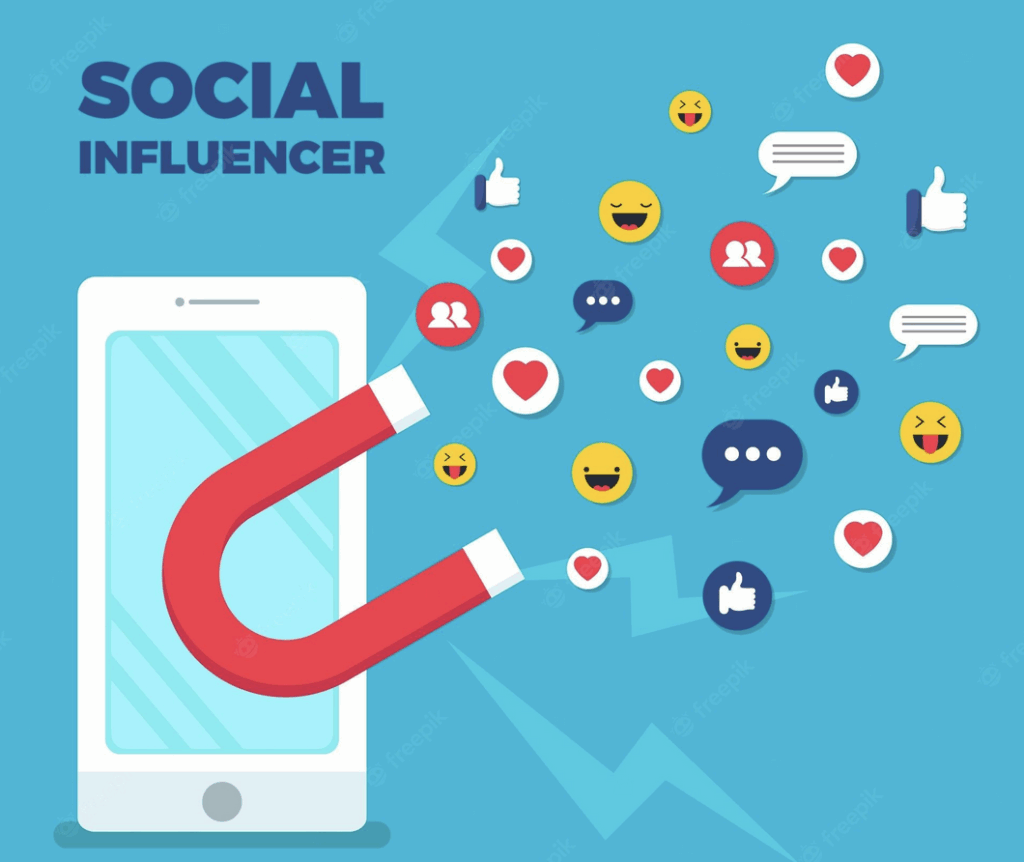An influencer campaign is best defined as follows: A marketing strategy involving collaboration with social media influencers for promoting a brand or product. The Internet is peppered with social influencers – the voices driving traffic flow in a particular direction.
Social influencers are prominent in political discourse, celebrity news and reviews, advertising campaigns, and as top-tier brand ambassadors. In each instance, savvy marketers piggyback off the celebrity status and real-world appeal of social influencers. This enhances reach and credibility, engages audiences, and ultimately drives sales.
Arguably, the biggest challenge any aspiring brand faces is adoption by the target market. Interest in a company’s products and services is a byproduct of many different variables, including the quality of the offering, utility value, and both expected and actual benefits. For consumers, association with a high-quality brand is a natural driver of increased adoption rates.
Think of a social influencer campaign as a marketing strategy on steroids. The instant appeal of an influencer with vast numbers of followers offers an open door to the marketplace. People follow other people because they like their approach, their insights, their style, and their charisma.
Learning from Real Campaigns
One of the best ways to understand the value of influencer collaborations is by looking at influencer marketing case studies. These examples illustrate what works in real-world campaigns, demonstrating how various brands engage with audiences across diverse niches. For marketers, the benefit lies in seeing authentic strategies play out in measurable ways, whether that’s through engagement, conversions, or cultural impact.
Case studies provide a practical lens on theory, stripping away the buzzwords and giving you actionable insights. They also help uncover common pitfalls, such as mismatched partnerships or weak messaging. By studying proven campaigns, brands can adapt more innovative approaches and refine their own influencer strategies with far greater confidence.
It is crystal clear that these campaigns emphasize authenticity. Consumers are far more likely to engage with somebody they trust than with a polished advertisement. For example, a top-tier brand like Glossier thrives because of user-generated material. This fosters trust and a sense of community with the target market.
In the same vein, it’s important to have aligned values. By collaborating with influencers sharing similar values, credibility is established. Marketing campaigns that resonate on a personal level are far more effective at converting browsers into buyers.
Keys to Building Long-Term Influence
Of course, micro-influencers should not be summarily dismissed. Many brands use micro-influencers to promote their products and services. Daniel Wellington is one such example. The beauty of a micro-influencer is found in their smaller, personalized, and loyal following. Audiences are engaged with micro-influencers because there is often far more one-on-one interaction between parties.

Compare a micro-influencer to a high-profile celebrity who invariably engages minimally, if at all, on a personal level with followers. As a result, there is a greater success rate in targeted marketing campaigns. Consistency and strong relationships form the backbone of a successful influencer campaign – it’s a goal-setting strategy that pays dividends. In this case, a steady stream of engagement helps to maintain a strong social media presence with real consumers.
A fine line needs to be walked between constant updates and market oversaturation. This is where the personalized approach, back-and-forth, is sacrosanct. Audiences do not like to be bombarded with marketing gobbledygook; that approach is likely to render an influencer an irritant. To counter this, there must be messaging consistency, a sense of community, and the presence of an ongoing relationship. This ensures greater credibility.
Indeed, there is no substitute for intelligent, creative content. Digital influencers offer a wellspring of ideas for marketing experts. Since marketers come with their own toolkits of creative genius, partnering with a social influencer can be the perfect combination for driving brand awareness.
Engaging influencers with creative challenges can definitely amplify reach. Marketing campaigns that encourage unique content creation can go viral. This is fantastic for brand visibility and increased adoption rates. The cultural zeitgeist is key to a successful marketing campaign. It can enhance relatability and inclusivity. Local culture can make a brand far more appealing to diverse audiences.
Influencer marketing campaigns thrive on authenticity, consistency, and creativity. That’s a given. By studying what works and avoiding what doesn’t, brands can build stronger connections with their target market. This has the effect of boosting customer loyalty and driving a lasting impact.

